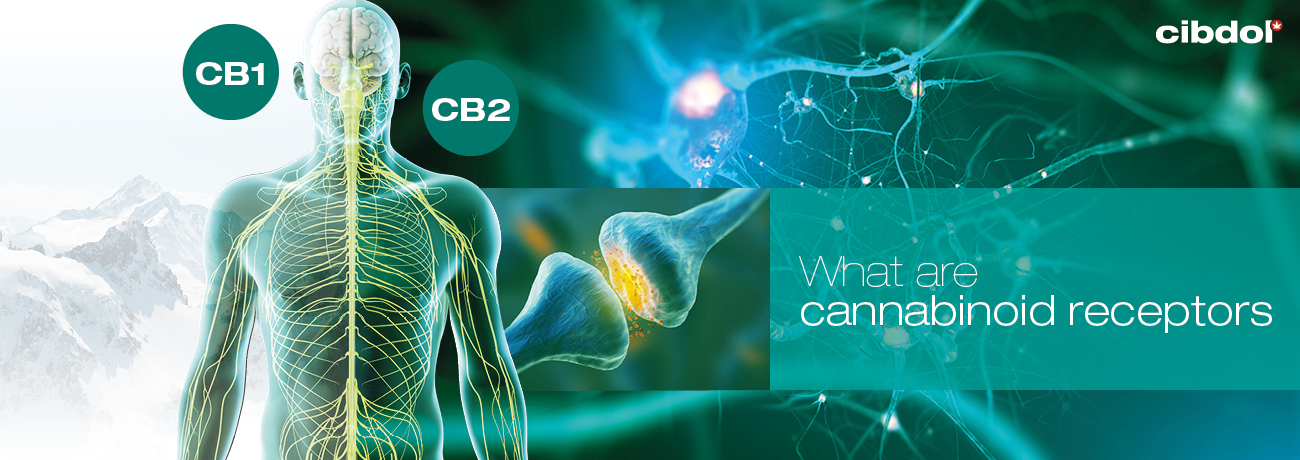How Do Cannabinoid Receptors Work?

Cannabinoid receptors exist throughout our entire body. More importantly, they act as a crucial entry point for wellness-boosting compounds. To find out what cannabinoid receptors are, and how they work, keep reading.
What are cannabinoid receptors?
Cannabinoid receptors are sophisticated G protein-coupled receptors[1] that help the body interact with various chemical compounds. But, in truth, there's a much simpler way to understand what they are.
The easiest way to imagine cannabinoid receptors is like an antenna, similar to the one you'd find on a car or television.
An antenna on your car receives signals from an outside source, transmitting that information to your radio. But, to stop you from receiving all the radio stations at once, each transmission is assigned a frequency. All you have to do is tune your radio to the right station, and the antenna will keep receiving the signal.
Cannabinoid receptors work in much the same way. Except, this time, we swap the car for the human body and the radio for various cells and biological functions.
Cannabinoid receptors help process and receive chemical compounds, transmitting their information to cells throughout our body. The cells can then use that information to help regulate vital functions such as sleep, mood, appetite, metabolism, and immune response.
When were cannabinoid receptors discovered?
Despite what we know about the crucial role cannabinoid receptors play in balancing well-being, their discovery was fairly recent, at least by scientific standards.
• 1980s — Scientists discover CB1 receptors
• 1992 — The endocannabinoid system (ECS) enters the picture, a vast network that connects all cannabinoid receptors
• 1993 — CB2, the second cannabinoid receptor, is identified
So far, researchers have identified two main types of cannabinoid receptors (CB1 and CB2). However, part of the reason it's taken so long to uncover these receptors has to do with how they're activated.
Although there are chemicals inside the body that communicate with CB1 and CB2 receptors, it's the compounds found inside Cannabis sativa that prompt a much greater range of interactions.
The Cannabis sativa species does, of course, include hemp (the primary source of CBD), but it also encompasses illicit variations, such as marijuana. It's definitely a challenge studying how cannabinoid receptors work when one of the best test subjects is widely prohibited.
How do cannabinoid receptors work?
Concerning both CB1 and CB2 receptors, there are two main groups of compounds they interact with. The first is with neurochemicals found inside the body, and the second is with phytocannabinoids found mainly in Cannabis sativa, such as CBD.
Despite the difference in origin, both internal and external compounds interact with CB receptors in the same way—using a lock and key mechanism.
For either group of compounds to interact, they need to have the right shape, which, in technical terms, means the proper chemical structure. CB1 and CB2 receptors both have slightly different “locks”, and will only accept compounds with a shape that matches. This biological lock and key system is why compounds like CBD only interact with specific receptors—not all of them.
Where are cannabinoid receptors found?
As we highlighted earlier, cannabinoid receptors exist to receive and transmit specific signals. Receptors in our immune system, for example, transmit signals that help with our inflammatory response, while receptors in our brain can influence mood or appetite.
It's important to highlight that CB1 and CB2 receptors don't exist together, but in different locations throughout the body. For example, the brain features the vast majority of CB1 receptors, while the digestive system contains an abundance of CB2 sites.
Areas with the highest concentration of cannabinoid receptors include:
• Brain (central nervous system)
• Liver
• Reproductive system
• Cardiovascular system
• Skin
• GI tract
• Immune system
• Peripheral nervous system
How many cannabinoid receptors are there in the human body?
Researchers are hard at work establishing the full scope of the cannabinoid receptors we have identified, and how impactful a role they play in well-being. With receptors appearing from head to toe, there's certainly a lot to examine.
In addition to CB1 and CB2, scientists believe there's a handful of other receptors that act similarly[2]. But, given how recently CB receptors were discovered, there's still a tremendous amount to learn about them, and, who knows, there may be several more we don't yet know about.
How does CBD interact with cannabinoid receptors?
It makes sense to end our exploration of cannabinoid receptors with how they communicate with CBD. The truth is, neither CB1 nor CB2 receptors show much affinity for CBD, but that doesn't mean their relationship is meaningless!
CBD takes a more supportive role with cannabinoid receptors. Rather than interacting with them directly, it works to encourage how well they bind with other compounds. The benefit of a stronger interaction is that the outcomes are more pronounced. If we refer back to our car radio analogy, the stronger the signal, the higher the quality and the clearer a radio station sounds.
By taking the role of "general manager", CBD ensures the entire network of receptors is functioning as it should. As, with a fully functioning system of cannabinoid receptors, the body is better equipped to deal with disease and disorder that might throw it off balance.
If you want to experience the mediating effects of CBD for yourself, check out the Cibdol store for a complete selection of CBD oils, capsules, and cosmetics. Or, if you're intrigued by the potential of cannabinoid receptors and the endocannabinoid system, browse our CBD Encyclopedia for more information.
[1] Mackie, K. (2018). Cannabinoid receptors: where they are and what they do. PubMed. https://pubmed.ncbi.nlm.nih.gov/18426493/ [Source]
[2] Ryberg, E., Larsson, N., & Sjögren, S. (2007). The orphan receptor GPR55 is a novel cannabinoid receptor. NCBI. https://www.ncbi.nlm.nih.gov/pmc/articles/PMC2095107/ [Source]
[1] Mackie, K. (2018). Cannabinoid receptors: where they are and what they do. PubMed. https://pubmed.ncbi.nlm.nih.gov/18426493/ [Source]
[2] Ryberg, E., Larsson, N., & Sjögren, S. (2007). The orphan receptor GPR55 is a novel cannabinoid receptor. NCBI. https://www.ncbi.nlm.nih.gov/pmc/articles/PMC2095107/ [Source]












